- Home
- Alison Weir
Six Wives of Henry VIII
Six Wives of Henry VIII Read online
The Six Wives of Henry VIII
Alison Weir
Chronology
1485
22 August - Battle of Bosworth. Henry Tudor usurps the English throne as Henry VII and founds the Tudor dynasty.
16 December - Birth of Katherine of Aragon.
1486
19/20 September - Birth of Prince Arthur, eldest son of Henry VII.
1489
27 March - Treaty of Medina del Campo: Katherine and Arthur betrothed.
1491
28 June - Birth of Prince Henry, second son of Henry VII.
1499
19 May - Katherine and Arthur married by proxy.
c. 1500/1 - Birth of Anne Boleyn.
1501
19 May - Katherine and Arthur married for a second time by proxy.
27 September - Katherine arrives in England.
12 November - Katherine enters London in state.
14 November - Marriage of Katherine of Aragon and Arthur, Prince of Wales.
1502
2 April - Death of Prince Arthur.
1503
25 June - Katherine betrothed to Prince Henry.
1504
18 February - Prince Henry created Prince of Wales.
26 November - Death of Isabella of Castile.
1505
27 June - Prince Henry secretly repudiates his betrothal.
1507/8 - Birth of Jane Seymour.
1509
22 April - Death of Henry VII and accession of Henry VIII.
11 June - Marriage of Henry VIII and Katherine of Aragon.
23 June - Henry and Katherine enter London in state.
24 June - Coronation of Henry VIII and Katherine of Aragon.
1510
31 January - Birth of a stillborn daughter to Katherine of Aragon.
1511
1 January - Birth of Prince Henry, son of Henry VIII and Katherine of Aragon.
22 February - Death of Prince Henry.
c.1512 - Birth of Katherine Parr.
1513
30 June to 22 October - Katherine rules as regent while Henry VIII campaigns in France.
9 September - Battle of Flodden.
October - Birth of a son, who died soon after birth, to Katherine of Aragon.
1514
November - Birth of a son, who died soon after birth, to Katherine of Aragon.
1515
22 September - Birth of Anne of Cleves.
1516
January - Death of Ferdinand of Aragon.
18 February - Birth of the Princess Mary, daughter of Henry VIII and Katherine of Aragon.
1518
10 November - Birth of a daughter, who died soon after birth, to Katherine of Aragon.
1519
February - Death of the Holy Roman Emperor, Maximilian, followed by the election of Charles of Castile, Katherine of Aragon's nephew, in his stead.
June - Birth of Henry FitzRoy, bastard son of Henry VIII by Elizabeth Blount.
1520
3-23 June - The Field of Cloth of Gold, summit meeting between Henry VIII and Francis I of France.
1524
Katherine of Aragon known to be past the age for bearing children. Cessation of sexual relations between her and Henry VIII.
c.1525 - Birth of Katherine Howard.
1525
August - Princess Mary's household established at Ludlow.
1526
February - First indication that Henry VIII courting Anne Boleyn.
1527
6 May - Sack of Rome by the Emperor's troops.
17 May - Proceedings to annul Henry VIII's marriage to Katherine of Aragon instituted in an ecclesiastical court at Westminster.
22 June - Katherine informed by Henry of his doubts concerning the validity of their marriage.
September - Henry VIII asks the Pope to help him gain an annulment of his marriage.
1528
29 September - Cardinal Campeggio, sent by the Pope to try the King's case, arrives in England.
1529
31 May - The legatine court opens at Black Friars, London.
23 July - Campeggio adjourns the case indefinitely to Rome.
1530
November - Death of Cardinal Wolsey
.
1531
11 February - The Reformation Parliament acknowledges Henry VIII as Supreme Head of the Church of England under Christ.
14 July - Henry separates from Katherine and she is banished from court.
1532
1 September - Anne Boleyn created Lady Marquess of Pembroke.
1533
25 January - Secret marriage of Henry VIII and Anne Boleyn.
12 April - Anne Boleyn first appears in public as Queen of England.
23 May - Archbishop Cranmer declares the marriage of Henry VIII and Katherine of Aragon to be invalid and unlawful.
28 May - Archbishop Cranmer declares the marriage of Henry VIII and Anne Boleyn to be good and valid.
31 May - Anne Boleyn enters London in state.
1 June - Coronation of Anne Boleyn.
7 September - Birth of the Princess Elizabeth, daughter of Henry VIII and Anne Boleyn.
1534
23 March - Parliament passes the Act of Succession vesting the succession in Anne Boleyn's children by the King.
23 March - Pope Clement VII pronounces the marriage of Henry VIII and Katherine of Aragon to be lawful and canonical.
c. July - Birth of a child, sex not known, either stillborn or dead soon after birth, to Henry VIII and Anne Boleyn.
1535
22 June - Execution of John Fisher, Bishop of Rochester.
late June - Birth of a stillborn child to Anne Boleyn.
6 July - Execution of Sir Thomas More.
November - First mention of Henry VIII's courtship of Jane Seymour.
1536
7 January - Death of Katherine of Aragon.
29 January - Birth of a stillborn son to Anne Boleyn.
2 May - Anne Boleyn arrested and taken to the Tower of London.
15 May - Trial of Anne Boleyn.
19 May - Execution of Anne Boleyn.
20 May - Henry VIII betrothed to Jane Seymour.
30 May - Marriage of Henry VIII and Jane Seymour.
7 June - Jane Seymour enters London in state.
June - Parliament passes the Act of Succession vesting the succession in Jane Seymour's children by the King.
13 June - Henry's daughter Mary offers him her submission.
September 1536 - March 1537 - Pilgrimage of Grace.
1537
12 October - Birth of Prince Edward, son of Henry VIII and Jane Seymour.
24 October - Death of Jane Seymour.
1539
4 September - Henry VIII betrothed to Anne of Cleves.
27 December - Anne of Cleves arrives in England.
1540
6 January - Marriage of Henry VIII and Anne of Cleves.
4 February - Anne of Cleves enters London in state.
April - First mention of Henry VIII's courtship of Katherine Howard.
9 July - Henry VIII's marriage to Anne of Cleves annulled.
28 July - Execution of Thomas Cromwell.
Marriage of Henry VIII and Katherine Howard.
1541
1 November - Henry VIII informed by Archbishop Cranmer of Katherine Howard's misconduct.
1542
7 February - Parliament passes the Act of Attainder condemning Katherine Howard to death.
13 February - Execution of Katherine Howard.
1543
12 July - Marriage of Henry VIII and Katherine Parr.
1544
14 July - Katherine Parr rul
es as regent while Henry VIII campaigns in France.
1547
28 January - Death of Henry VIII; accession of Edward VI.
c.April - Marriage of Katherine Parr and Thomas Seymour.
1548
30 August - Birth of Mary, daughter of Katherine Parr and Thomas Seymour.
7 September - Death of Katherine Parr.
1553
6 July - Death of Edward VI.
10 July - Lady Jane Grey proclaimed Queen of England.
19 July - Queen Jane deposed; accession of Mary I, daughter of Henry VIII and Katherine of Aragon.
1557
16 July - Death of Anne of Cleves.
1558
17 November - Death of Mary I; accession of Elizabeth I, daughter of Henry VIII and Anne Boleyn.
Introduction
The reign of Henry VIII is one of the most fascinating in English history. Not only was it a time of revolutionary political and social change, but it was also dominated by one of the most extraordinary and charismatic men to emerge in the history of the British Isles - the King's contemporaries thought him 'the greatest man in the world' and 'such a king as never before'. He ruled England in unprecedented splendour, surrounded by some of the most intriguing personalities of the age, men and women who have left behind such vivid memorials of themselves that we can almost reach out across the centuries and feel we know them personally.
Six of these people were the King's wives. It is - and was then - a remarkable fact in itself that a man should have six wives, yet what makes it especially fascinating to us is that these wives were interesting people in their own right. We are fortunate that we know so much about them - not only the major events and minutiae of their public lives, but also something of their thoughts and feelings, even the intimate details of their private lives. Henry VIII's marital affairs brought the royal marriage into public focus for the first time in our history; prior to his reign, the conjugal relationships of English sovereigns were rarely chronicled, and there remain only fragmentary details of the intimate lives of earlier kings and queens. Yet, thanks to Henry VIII, such details became a matter of public interest, and no snippet of information was thought too insignificant to be recorded and analysed, a trend that has continued unabated for 450 years, and which has burgeoned in the twentieth century with the expansion of the media.
Thanks to the wealth of written material that has survived in the form of early biographies, letters, memoirs, account books and diplomatic reports, unprecedented in any preceding reign, we know a great deal about, and are able to make sense of, the lives of these six long-dead women. That such material was for the first time available to any sizeable extent was thanks to the humanism of the Renaissance and the widening interest in learning it engendered. There was a dramatic expansion of educational facilities, with the founding of many new colleges and schools, and literacy was now seen as being of prime importance, not only for men, but- to an increasing degree as the Tudor period progressed - for women also. The development of printing gave rise to a growth industry in popular works and tracts, which coincided with a renewed interest in history, leading to a succession of books by a new generation of chroniclers. Greater care was taken, both in England and abroad, to maintain public records, and with the evolution of intelligence systems, such as that established by Thomas Cromwell, more detailed information than ever before was accumulated.
Much of the source material for the reign of Henry VIII was collated by historians and published in the late nineteenth and early twentieth centuries, giving rise to a succession of biographies, learned and otherwise, of the King, his courtiers and his wives. Yet while there have been several excellent recent individual biographies of the wives (seeBibliography),there has been no serious collective biography since 1905 when M. A. S. Hume's scholarly book,The Wives of Henry VIIIwas published. This present book aims to fill that gap for the general reader, with information drawn from only the most reliable of the original sources.
What were they really like, those six wives? Because of the nature of the source material for the reign, nearly all of which has a political or religious bias, a writer could come up with very different assessments of each of them, all of which might be equally valid. But this would be abdicating some of the responsibilities of an historian, whose function is to piece together the surviving evidence and arrive at a workable conclusion. What follows are the conclusions I have reached after many years of research into the subject, conclusions that, on the weight of the evidence, must be as realistic as anything can be after a lapse of 450 years.
Thus, we will see that Katherine of Aragon was a staunch but misguided woman of principle; Anne Boleyn an ambitious adventuress with a penchant for vengeance; Jane Seymour a strong-minded matriarch in the making; Anne of Cleves a good-humoured woman who jumped at the chance of independence; Katherine Howard an empty-headed wanton; and Katherine Parr a godly matron who was nevertheless all too human when it came to a handsome rogue. They were fascinating women, both because of who they were and what happened to them; yet we should not lose sight of the fact that, while they were queens and therefore, nominally at least, in a position of power, they were also bound to a great degree by the constraints that restricted the lives of all women at that time. We should therefore, before proceeding with their story, pause to consider those constraints.
'Woman in her greatest perfection was made to serve and obey man,' wrote the Scots reformer John Knox in his treatiseFirst Blast of the Trumpet against the Monstrous Regiment of Women,published in 1558. In Tudor England, as in the Middle Ages, women were brought up to believe that they were vastly inferior to men. Even a queen was subordinate to the will of her husband, and - like all wives - was required to learn in silence from him 'in all subjection'. Two of Henry VIII's wives - Anne Boleyn and Katherine Parr - being highly intelligent and outspoken women, found this particularly hard, and consequently both clashed with the King on numerous occasions. Naturally, Henry won. The concept of female inferiority was older than Christianity, but centuries of Christian teaching had rigidly enforced it. Woman was an instrument of the devil, the author of original sin who would lure man away from the path to salvation - in short, the only imperfection in God's creation.
Henry VIII's wives would all have learned very early in life that, as women, they had very little personal freedom. Brought up to obey their parents without question, they found that, once married to the King, they were expected to render the same unquestioning obedience to a husband - indeed, more so than ordinary wives, for this husband also happened to be the King of England. Even widowhood brought its constraints, as Katherine of Aragon found after her first husband died and she was left to the tender mercies of her father and father-in-law until she remarried. Only during courtship might a woman briefly gain the upper hand, as both Anne Boleyn and Jane Seymour did, but woe betide her if she did not quickly learn to conform once the wedding-ring was on her finger.
The notion that women could be equal to men would have been totally foreign to the King and most of his male contemporaries. Thus women, single or married, possessed very few legal rights. A woman's body and her worldly goods both became her husband's property on marriage, and the law allowed him to do exactly as he pleased with them. Infidelity in a wife was not tolerated, but for queens Henry VIII made it a treasonable offence punishable by death, because it threatened the succession. Two of Henry's wives died on the scaffold after being found guilty of criminal intercourse, and the wife of a peer could face the same penalty if her adultery was proved and her husband petitioned the King to have her executed. A wife who murdered her husband was guilty, not of murder, but of petty treason, and the penalty for this until the eighteenth century was death by burning. Even if a wife merely displeased her husband, justifiably or not, the law allowed him to turn her out of the house with just a shift to cover her, and she had no right of redress. Wife- beating was common and, instead of provoking the horrified reaction it arouses today, 450 years
ago it would have been regarded as a righteous punishment for an erring or disobedient wife, although there is no evidence that Henry VIII ever beat any of his wives.
From the cradle to the grave, the lives of Henry's queens - and of all women - were lived according to prescribed rules and conventions. Only four of the six received any formal education; Jane Seymour and Katherine Howard appear to have been barely literate. Many people in the first half of the sixteenth century still did not believe that women should be educated, holding to the medieval view that girls taught to write would only waste their skill on love-letters. But thanks to men such as the Spanish educationist Juan Luis Vives, and Sir Thomas More, whose daughters were renowned examples of womanly erudition, as well as the shining examples of both Katherine of Aragon and Katherine Parr who proved that women could be both learned and virtuous, the Renaissance concept of female education gradually became accepted and even applauded. Nevertheless, the Elizabethan bluestocking was not yet born; in Henry VIII's time, the education of girls was the privilege of the royal and the rich, and its chief aim was to produce future wives schooled in godly and moral precepts. It was not intended to promote independent thinking; indeed, it tended to the opposite.

 Richard III and the Princes in the Tower
Richard III and the Princes in the Tower Britain's Royal Families: The Complete Genealogy
Britain's Royal Families: The Complete Genealogy The Lady in the Tower: The Fall of Anne Boleyn
The Lady in the Tower: The Fall of Anne Boleyn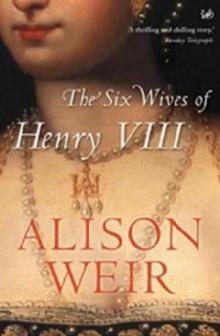 Six Wives of Henry VIII
Six Wives of Henry VIII Elizabeth of York: A Tudor Queen and Her World
Elizabeth of York: A Tudor Queen and Her World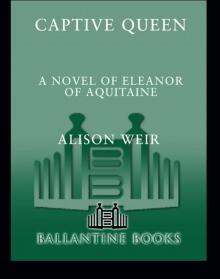 Captive Queen
Captive Queen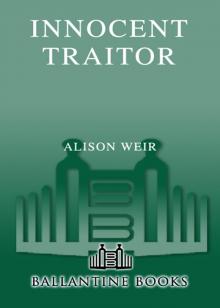 Innocent Traitor
Innocent Traitor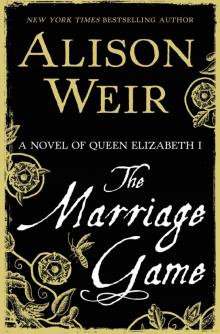 The Marriage Game
The Marriage Game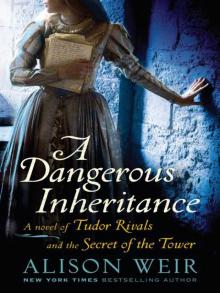 A Dangerous Inheritance
A Dangerous Inheritance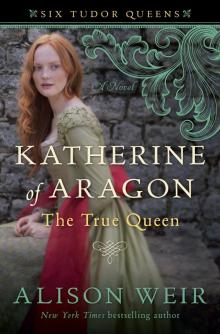 Katherine of Aragón: The True Queen
Katherine of Aragón: The True Queen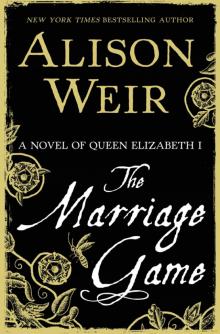 The Marriage Game: A Novel of Queen Elizabeth I
The Marriage Game: A Novel of Queen Elizabeth I Princes in the Tower
Princes in the Tower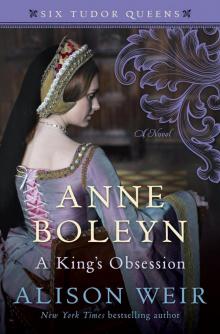 Anne Boleyn: A King's Obsession
Anne Boleyn: A King's Obsession Traitors of the Tower
Traitors of the Tower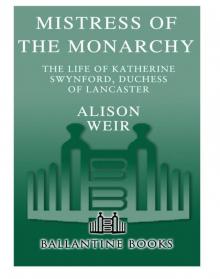 Mistress of the Monarchy: The Life of Katherine Swynford, Duchess of Lancaster
Mistress of the Monarchy: The Life of Katherine Swynford, Duchess of Lancaster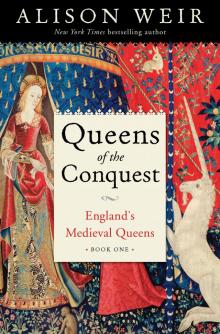 Queens of the Conquest: England’s Medieval Queens
Queens of the Conquest: England’s Medieval Queens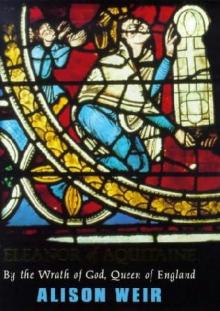 Eleanor of Aquitaine: A Life
Eleanor of Aquitaine: A Life Mary, Queen of Scots, and the Murder of Lord Darnley
Mary, Queen of Scots, and the Murder of Lord Darnley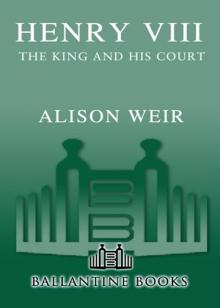 Henry VIII: The King and His Court
Henry VIII: The King and His Court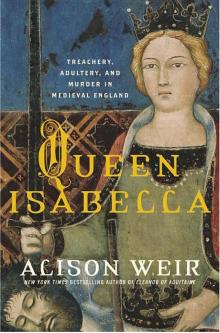 Queen Isabella: Treachery, Adultery, and Murder in Medieval England
Queen Isabella: Treachery, Adultery, and Murder in Medieval England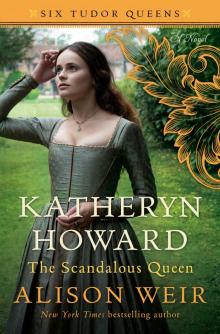 Katheryn Howard, the Scandalous Queen
Katheryn Howard, the Scandalous Queen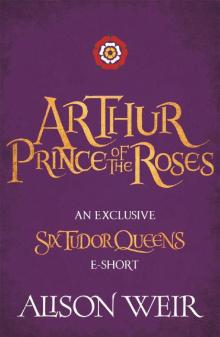 Arthur- Prince of the Roses
Arthur- Prince of the Roses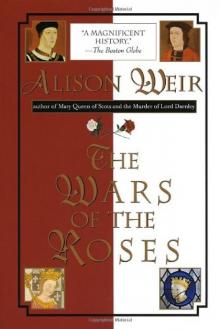 The Wars of the Roses
The Wars of the Roses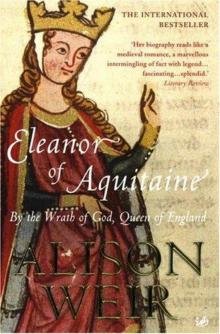 Eleanor of Aquitaine: By the Wrath of God, Queen of England
Eleanor of Aquitaine: By the Wrath of God, Queen of England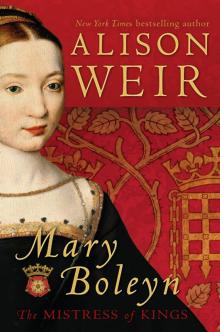 Mary Boleyn: The Great and Infamous Whore
Mary Boleyn: The Great and Infamous Whore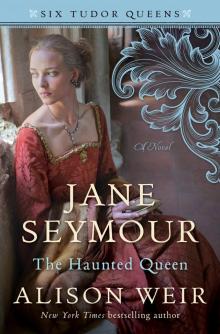 Jane Seymour: The Haunted Queen
Jane Seymour: The Haunted Queen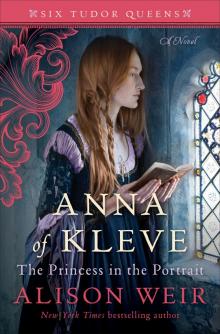 Anna of Kleve, the Princess in the Portrait
Anna of Kleve, the Princess in the Portrait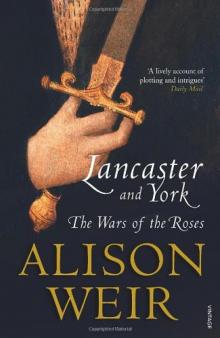 Lancaster and York: The Wars of the Roses
Lancaster and York: The Wars of the Roses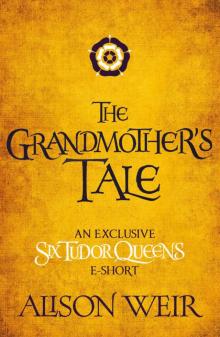 The Grandmother's Tale
The Grandmother's Tale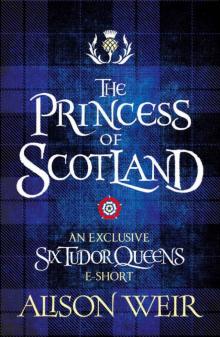 The Princess of Scotland (Six Tudor Queens #5.5)
The Princess of Scotland (Six Tudor Queens #5.5)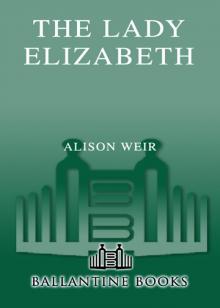 The Lady Elizabeth
The Lady Elizabeth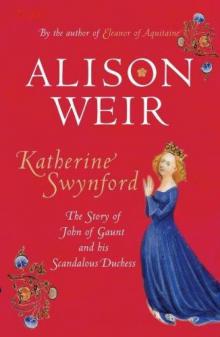 Katherine Swynford: The Story of John of Gaunt and His Scandalous Duchess
Katherine Swynford: The Story of John of Gaunt and His Scandalous Duchess The Curse of the Hungerfords
The Curse of the Hungerfords The Lost Tudor Princess: The Life of Lady Margaret Douglas
The Lost Tudor Princess: The Life of Lady Margaret Douglas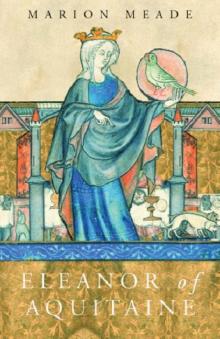 Eleanor of Aquitaine
Eleanor of Aquitaine Mistress of the Monarchy
Mistress of the Monarchy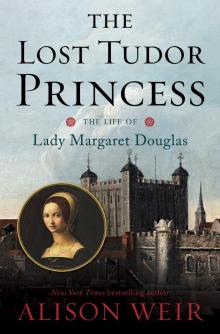 The Lost Tudor Princess
The Lost Tudor Princess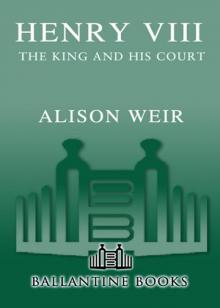 Henry VIII
Henry VIII Anne Boleyn, a King's Obsession
Anne Boleyn, a King's Obsession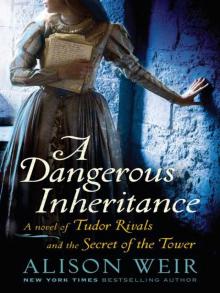 A Dangerous Inheritance: A Novel of Tudor Rivals and the Secret of the Tower
A Dangerous Inheritance: A Novel of Tudor Rivals and the Secret of the Tower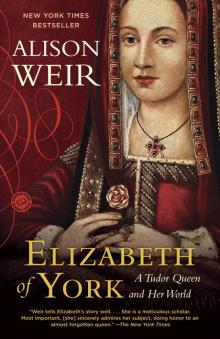 Elizabeth of York
Elizabeth of York Katherine of Aragon, the True Queen
Katherine of Aragon, the True Queen Katherine Swynford
Katherine Swynford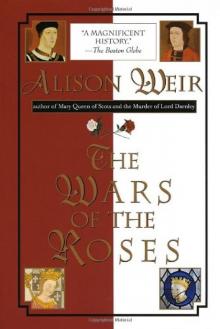 Wars of the Roses
Wars of the Roses Queens of the Conquest
Queens of the Conquest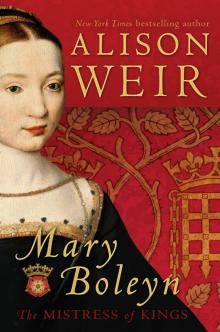 Mary Boleyn
Mary Boleyn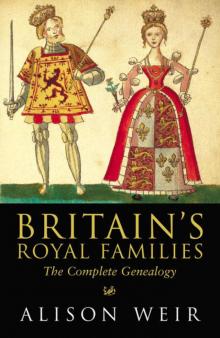 Britain's Royal Families
Britain's Royal Families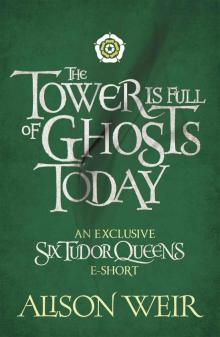 The Tower Is Full of Ghosts Today
The Tower Is Full of Ghosts Today Life of Elizabeth I
Life of Elizabeth I Anne Boleyn A King's Obssession
Anne Boleyn A King's Obssession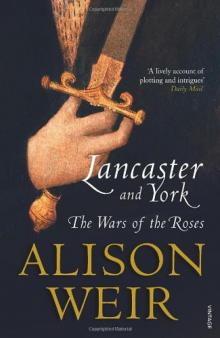 Lancaster and York
Lancaster and York Jane Seymour, the Haunted Queen
Jane Seymour, the Haunted Queen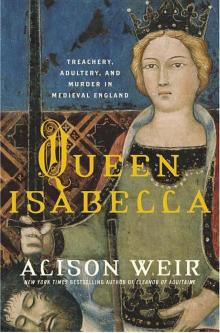 Queen Isabella
Queen Isabella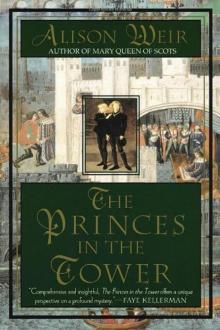 The princes in the tower
The princes in the tower